
- Startseite
- Aktive Auktionen
-
Beendete Auktionen
- Münzen und Medaillen
- Philatelie
- Antiquities
- Alte Meister
- Juwelen, Silber und Uhren
- Alte und Moderne Glittica
- Alte Porzellane und Keramik
- Antiques
- Moderne und zeitgenössische Kunst
- 20. Jh. Design und Dekorative Kunst
- Drucke und Multiples
- Asiatische und tribal Kunst
- Fotografie
- Mittelalterliche Kunst
- Alte Rahmen
- Mode und Textilkunst
- Bücher, Autogramme und Erinnerungsstücke
- Wines and spirits
- Oddities, Curiosities & Wonders
- Info
- Live Bidding
- Startseite
- Auction 86
- 236 A rare and large roman sardonyx intaglio. Seven-branched ...
Los Nr. 236 - Auction 86
Beschreibung
1st - 5th century A.D.
30 x 37 x 4 mm
The Second Temple’s seven-branched candelabrum with three animal claws (according to Jewish tradition, the candelabrum was three-footed), with, on each side, a palm branch (lulav) in kantharos. Groundline. The sense of execution with refined incision to enhance some details of the candelabrum branches, the pedestal and the belly of the kantharos demonstrate a high skilled technic. This probably indicates a specific command for an important personality. The seven branched menorah with conical foot appears on the last Hasmonean coinage imagery (40-37 B.C.) and then, not employed during the two Jewish wars against Rome. Although the interdiction of representation was in force at this time, the rabbinical ruling authorized jews to own seals with images even made by pagans as long as it was not meant for worship, but for sealing, or decorative purposes (see. Spier, J. Late Antique and Early Christian Gems, 2013, pp. 159-161). Hence, the widespread of a certain type of jewish imagery during the Roman Imperial period can be identified in major part with the seven-branched candelabrum, which was the most significant and popular Jewish symbol of the graeco-roman period (one of the most known example is the high relief on Titus Arch in Rome, made in 81 A.D. by Titus’s brother, the emperor Domitian). A similar iconography with the kantharos on each side and palm branch is represented on one facade of the Magdalena stone discovered in Galilea and dated from the 1st century A.D. The use of animal (lion type) claws for the base of the candelabrum remind one precisely of the Pompeii candelsticks and of the sarcophagus in the Villa Torlonia. In fact, this particularity begins in the late Hellenistic period, at the time of the Second Temple was erected, the animals representations of the Near-East was exercising a strong influence on Hellenistic art. Various wear signs on both side. Very attractive stone. Large dimension.
Parallels : Spier, J., Late Antique and Early Christian gems, pl.121, n°941-943 Strauss, H., The History and Form of the Seven-Branched candlestick of the Hasmonean King, Journal of the Warburg and Courtauld Institutes,Vol. 22, No. 1/2 (Jan. - Jun., 1959), pp. 6-16
U.K., private collection, 70's-80's, London.
Bitte melden Sie sich an, oder registrieren Sie sich für Ihren persönlichen Zugang.
Für weitere Informationen schreiben Sie uns an info@bertolamifineart.com
 Cookie-Richtlinie
Cookie-Richtlinie
Diese Website verwendet Cookies , um die Benutzererfahrung zu verbessern und Informationen über die Nutzung der Website zu sammeln. Es gibt auch Cookies, die für die Auswahl personalisierter Anzeigen und Werbeinhalte verwendet werden können. Sie können unsere Cookie-Richtlinie lesen, alle Cookies akzeptieren und fortfahren durch Klicken auf "Akzeptieren" oder Ihre Auswahl anpassen, indem Sie auf "Anpassen" klicken.
Cookie-Richtlinie
Cookies
Damit diese Website ordnungsgemäß funktioniert, installieren wir manchmal kleine Dateien namens " Cookies " auf Ihrem Gerät. Die meisten großen Websites tun dasselbe.
Was sind Cookies?
Ein Cookie ist eine kleine Textdatei, die Websites auf Ihrem Computer oder Mobilgerät speichern, während Sie sie besuchen. Dank Cookies merkt sich die Site Ihre Aktionen und Präferenzen (z. B. Login, Sprache, Schriftgröße und andere Anzeigeeinstellungen), sodass Sie diese nicht erneut eingeben müssen, wenn Sie zur Site zurückkehren oder von einer Seite zur anderen navigieren.
Wie verwenden wir Cookies?
Cookies von Drittanbietern
Google Analytics
Diese Website verwendet Google Analytics, um Informationen über die Nutzung der Website durch die Nutzer zu sammeln. Google Analytics generiert statistische und andere Informationen durch Cookies, die auf den Computern der Benutzer gespeichert werden. Die über unsere Website erzeugten Informationen werden verwendet, um Berichte über die Nutzung von Websites zu erstellen. Diese Informationen werden von Google gespeichert und verwendet. Die Datenschutzerklärung von Google ist unter folgender Adresse abrufbar: https://policies.google.com/privacy .
Es ist nicht erforderlich, Cookies zu aktivieren, damit die Website funktioniert, aber dies verbessert die Navigation. Es ist möglich, Cookies zu löschen oder zu blockieren, aber in diesem Fall können einige Funktionen der Website nicht richtig funktionieren.Die Informationen zu Cookies werden nicht verwendet, um Benutzer zu identifizieren, und die Navigationsdaten stehen immer unter unserer Kontrolle. Diese Cookies werden ausschließlich für die hier beschriebenen Zwecke verwendet.
So kontrollieren und ändern Sie Cookies?
Sie können Ihre Einwilligung jederzeit in der Cookie-Erklärung ändern oder widerrufen unsere Website.
Datenschutzerklärung
Erfahren Sie mehr darüber, wer wir sind, wie Sie uns kontaktieren können und wie wir personenbezogene Daten verarbeiten in unserer Datenschutzrichtlinie .
Die notwendigen Cookies helfen dabei, die Website nutzbar zu machen, indem sie grundlegende Funktionen wie Seitennavigation und Zugriff auf geschützte Bereiche der Website ermöglichen. Ohne diese Cookies kann die Website nicht richtig funktionieren.
| Name | Lieferant | Zweck | Ablauf |
|---|---|---|---|
| cookieConsent | bidinside | Speichert den Cookie-Zustimmungsstatus des Benutzers für die aktuelle Domäne | 6 Monate |
| PHPSESSID | bidinside | Bewahren Sie den Status des Benutzers auf den verschiedenen Seiten der Site auf. | Wenn die Browsersitzung endet |
| f_display | bidinside | Die f_display-Cookies speichern den vom Benutzer gewählten Anzeigemodus auf den Seiten mit Listen | Wenn die Browsersitzung endet |
| f_page | bidinside | Die f_page-Cookies speichern die vom Benutzer angezeigte Seite auf den Seiten, auf denen Listen vorhanden sind | Wenn die Browsersitzung endet |
| f_rec_page | bidinside | Die f_rec_page-Cookies speichern die Anzahl der Elemente, die pro vom Benutzer ausgewählter Seite auf den Seiten angezeigt werden sollen, auf denen Listen vorhanden sind | Wenn die Browsersitzung endet |
| f_order_by | bidinside | Die f_order_by-Cookies speichern die vom Benutzer ausgewählten Sortierparameter auf den Seiten, auf denen Listen vorhanden sind | Wenn die Browsersitzung endet |
| f_order_dir | bidinside | Die Cookies f_order_dir speichern die vom Benutzer gewählte Bestellrichtung auf den Seiten, auf denen Listen vorhanden sind | Wenn die Browsersitzung endet |
| watch_list_show_imgs | bidinside | Das Cookie watch_list_show_imgs speichert die Wahl des Benutzers, die Bilder der Lose auf der Merklistenseite anzuzeigen oder auszublenden | Wenn die Browsersitzung endet |
| selected_voice | bidinside | Das Cookie selected_voice speichert die vom Benutzer ausgewählte Stimme für die in der Live-Auktion vorhandene Sprachsynthese | 1 Monat |
| include_autobids | bidinside | Das Cookie include_autobids speichert die Wahl des Benutzers, seine auto-bid auf der Seite 'Ihre Gebote' anzuzeigen oder auszublenden | 6 Monate |
Analytische Cookies helfen zu verstehen, wie Besucher mit der Website interagieren, indem sie statistische Informationen sammeln und an den Datenverantwortlichen übermitteln.
| Name | Lieferant | Zweck | Ablauf |
|---|---|---|---|
| _ga | Registrieren Sie eine eindeutige ID, die verwendet wird, um statistische Daten darüber zu generieren, wie der Besucher die Website nutzt. | 2 Jahre | |
| _gat_gtag | Wird von Google Analytics verwendet, um die Häufigkeit von Anfragen zu begrenzen | 1 Tag | |
| _gat | Wird von Google Analytics verwendet, um die Häufigkeit von Anfragen zu begrenzen | 1 Tag | |
| _gid | Registrieren Sie eine eindeutige ID, die verwendet wird, um statistische Daten darüber zu generieren, wie der Besucher die Website nutzt. | 1 Tag | |
| __utma | bidinside | Wird verwendet, um Benutzer und Sitzungen zu unterscheiden. Das Cookie wird erstellt, wenn die Javascript-Bibliothek ausgeführt wird und keine vorhandenen __utma-Cookies vorhanden sind. Das Cookie wird jedes Mal aktualisiert, wenn Daten an Google Analytics gesendet werden. | 2 jahre |
| __utmt | bidinside | Wird verwendet, um die Anforderungsrate zu drosseln. | 10 minuten |
| __utmb | bidinside | Wird verwendet, um neue Sitzungen/Besuche zu bestimmen. Das Cookie wird erstellt, wenn die Javascript-Bibliothek ausgeführt wird und keine vorhandenen __utmb-Cookies vorhanden sind. Das Cookie wird jedes Mal aktualisiert, wenn Daten an Google Analytics gesendet werden. | 30 minuten |
| __utmc | bidinside | Wird in ga.js nicht verwendet. Auf Interoperabilität mit urchin.js eingestellt. In der Vergangenheit wurde dieses Cookie in Verbindung mit dem __utmb-Cookie verwendet, um festzustellen, ob sich der Benutzer in einer neuen Sitzung/einem neuen Besuch befand. | Wenn die Browsersitzung endet |
| __utmz | bidinside | Speichert die Zugriffsquelle oder Kampagne, die erklärt, wie der Benutzer auf Ihre Website gelangt ist. Das Cookie wird erstellt, wenn die JavaScript-Bibliothek ausgeführt wird, und wird jedes Mal aktualisiert, wenn Daten an Google Analytics gesendet werden. | 6 monate |
| __utmv | bidinside | Wird verwendet, um benutzerdefinierte variable Daten auf Besucherebene zu speichern. Dieses Cookie wird erstellt, wenn ein Entwickler die Methode _setCustomVar mit einer benutzerdefinierten Variablen auf Besucherebene verwendet. Dieses Cookie wurde auch für die veraltete Methode _setVar verwendet. Das Cookie wird jedes Mal aktualisiert, wenn Daten an Google Analytics gesendet werden. | 2 jahre |
Präferenz- / technische Cookies ermöglichen einer Website, sich an Informationen zu erinnern, die das Verhalten oder die Darstellung der Website beeinflussen, wie z. B. Ihre bevorzugte Sprache oder die Region, in der Sie sich befinden.
Wir verwenden keine Cookies dieser Art.Profiling-Cookies werden für Marketingzwecke verwendet, um Website-Besucher zu überwachen. Die Absicht besteht darin, relevante und ansprechende Anzeigen für den einzelnen Benutzer anzuzeigen.
| Name | Lieferant | Zweck | Ablauf |
|---|---|---|---|
| _fbp | Facebook-Pixel, Targeting- und Werbe-Cookie. Dieses Cookie ermöglicht es uns, unsere Werbung Personen zu zeigen, die unsere Website bereits besucht haben, wenn sie auf Facebook oder auf einer von Facebook Advertising unterstützten digitalen Plattform sind. | 6 Monate | |
Nicht klassifizierte Cookies sind Cookies, die zusammen mit einzelnen Cookie-Anbietern klassifiziert werden.
Wir verwenden keine Cookies dieser Art.



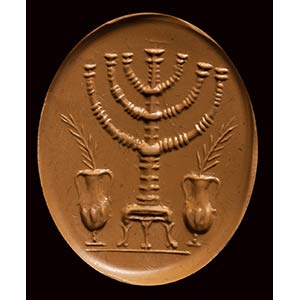
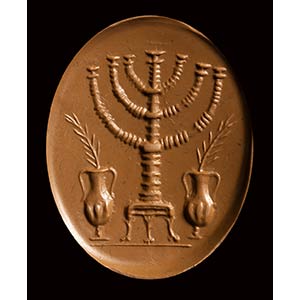
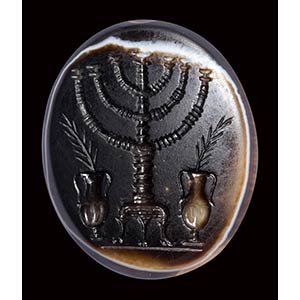
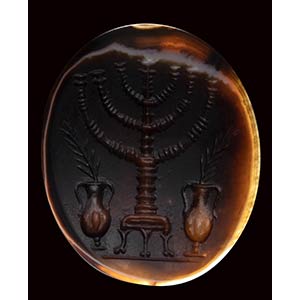


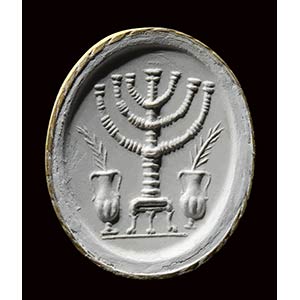
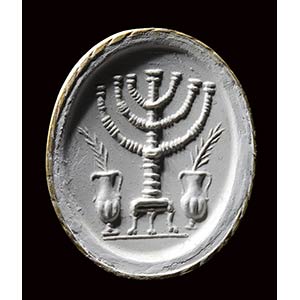

 237
237